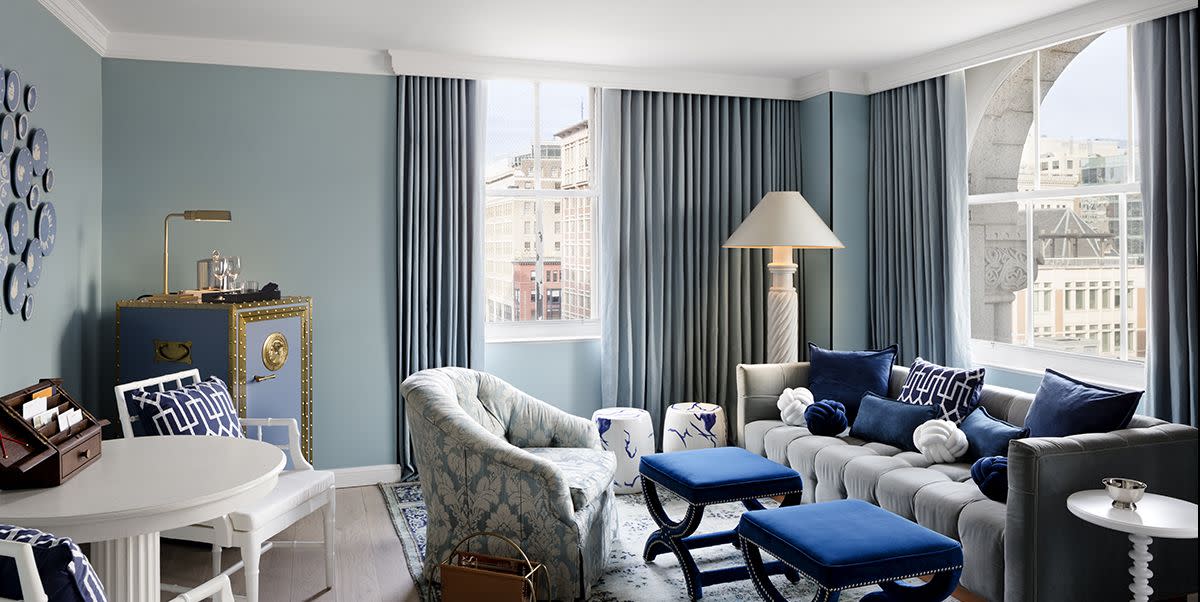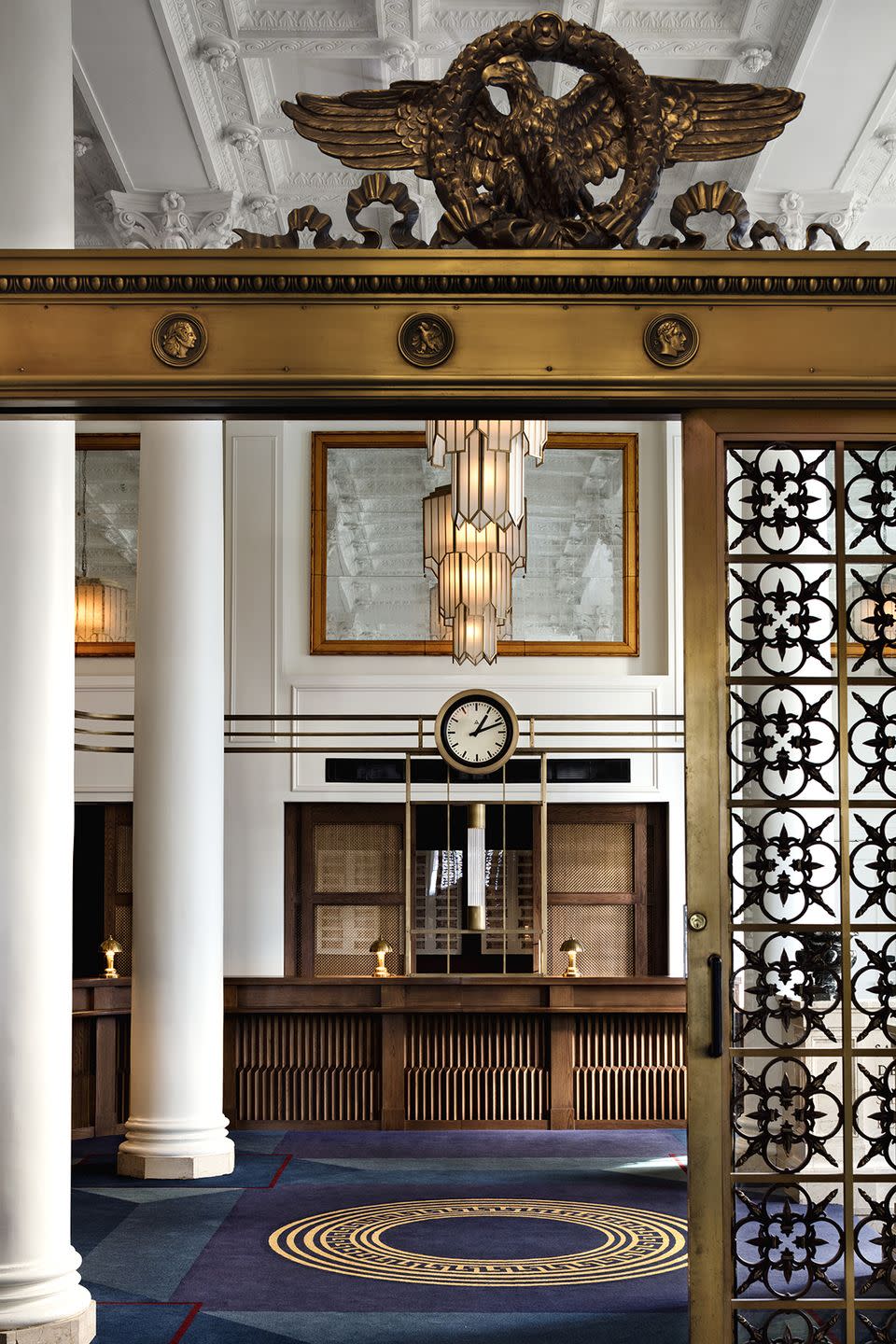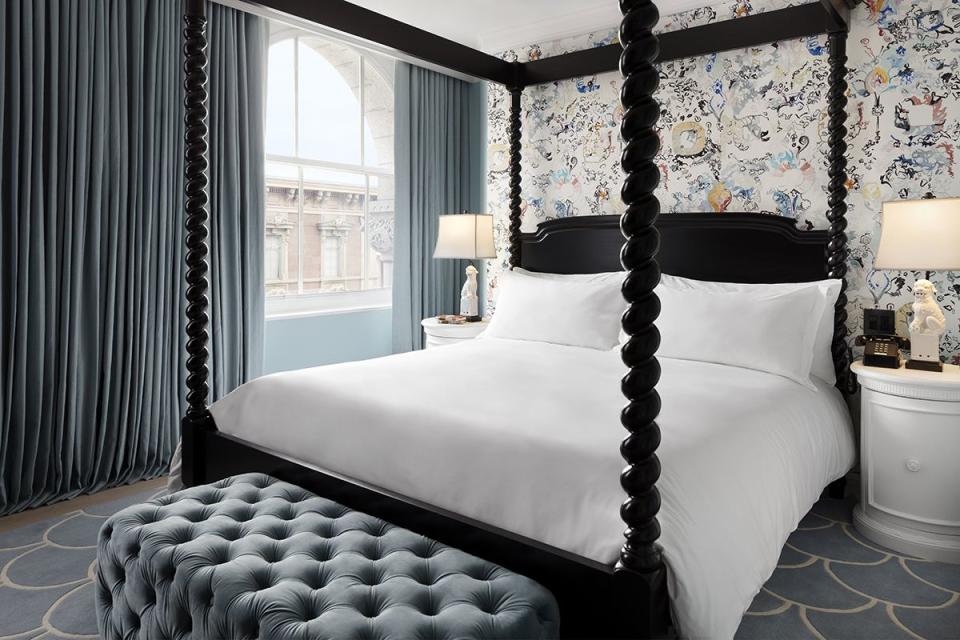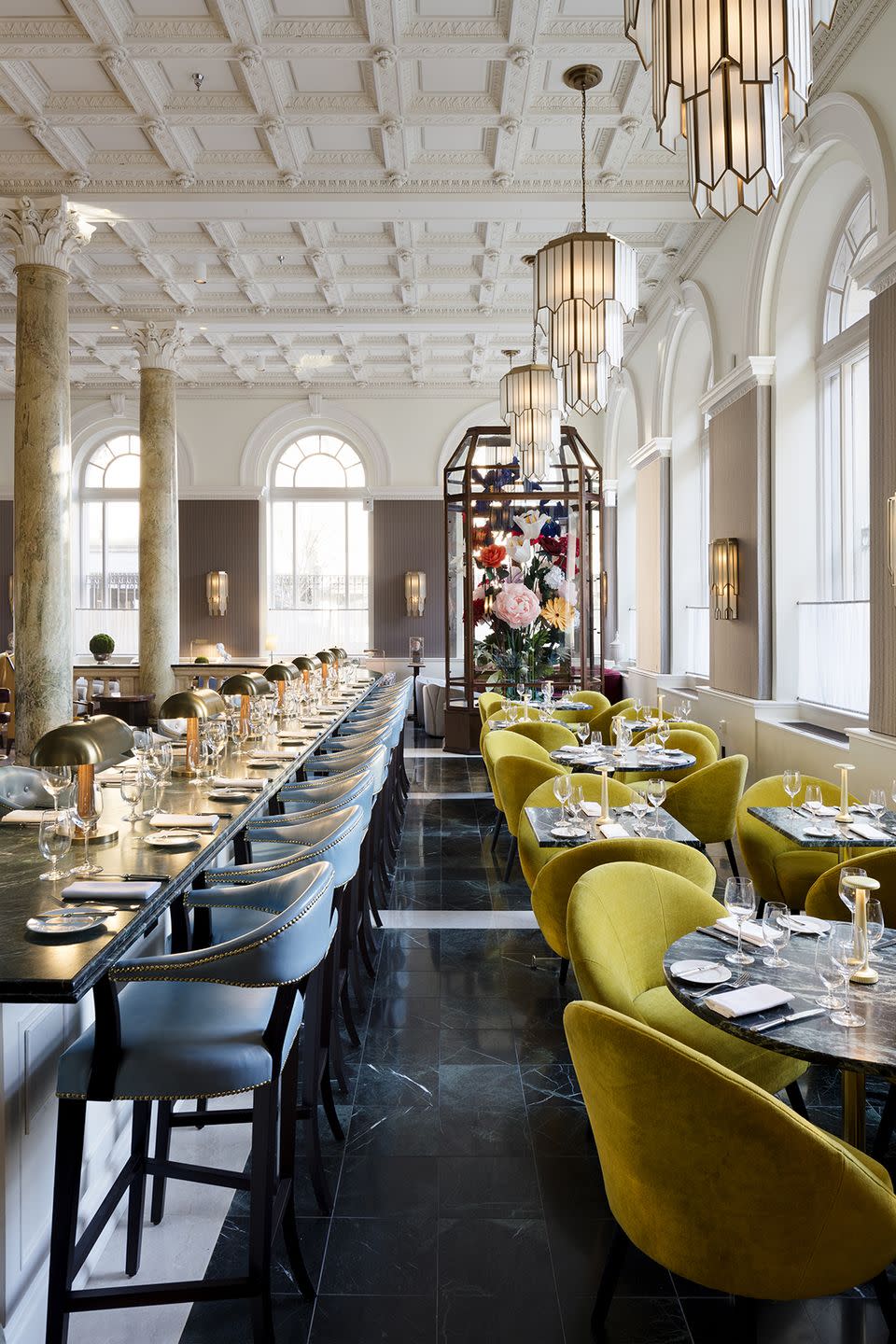The Best Room at ... Riggs Washington, D.C.

Our column "The Best Room At" offers a glimpse inside some of the most charming, luxurious, and iconic properties around the world.
While Washington, D.C.’s most celebrated buildings tend to be monuments, museums, or houses of government, that doesn’t mean there isn’t room for additions. Riggs Washington D.C. is situated in a grand former bank in the city’s Penn Quarter neighborhood just across from the National Portrait Gallery, and while the property is certainly impressive from the outside, it’s what you’ll find inside—from luxurious guest rooms to an all-day restaurant, a subterranean bar, a lively rooftop, among other delightful discoveries—that’s truly remarkable. Here, creative director Jacu Strauss, who also designed the Pulitzer Amsterdam, discusses the hotel’s best accommodations, the history that inspired them, and creative ways to enjoy a capital city.

What do you consider to be the best room at the property and why?
That’s a tough one! I have a real soft spot for the First Lady suites. We have four of them, all unique in their style and design. My favorite is the Caroline Harrison suite; she introduced a porcelain collection to the White House, and I took that as inspiration. The design is based on Wedgwood Jasperware, all pale blues and whites; it’s an abstract interpretation, but was inspired by what she did. The Ida McKinley suite is all pink, the Louisa Adams suite let us bring in a grand piano and design a suite around the idea of music, and the Angelica Van Buren suite—even though she wasn’t a First Lady—reflects her love of opulence.
How much does it cost per night?
The starting rate is $999 per night.

How would you describe the guests and the vibe at the hotel?
The hotel attracts leisure and business travelers, so we needed something where everyone felt comfortable, but we also wanted to create a space that felt elevated. The building is quite grand, but we wanted to introduce something that felt intimate, otherwise it becomes a bit too daunting. I tried to balance grandeur with intimacy, all without being too serious. D.C. can be a serious city, but a hotel needs to take you away from all of that. The hotel used to be a bank, so we played a bit with that heritage so that it feels contemporary and finds that sweet spot where there’s something for everyone to enjoy.
What is one thing about the hotel that you think first time visitors will find surprising?
It’s amazing to see what people pick up on—it’s not always what I predict. When you go inside the hotel, we have layer upon layer of discovery. It’s all about how people can discover things in the public areas and the rooms. Guests are responding to the heritage of the building; people have walked in and said their grandmother used to work here or bank here. I love that.

What do you think gives the hotel such a unique identity?
We want to celebrate grandeur but inject a bit of fun into it. We take what we do seriously, but we don’t take ourselves seriously. I discovered some relics from the building was a bank, things that have survived for 120 years. For example, on one of the brass doors we found all of these medallions with profiles of people—one was Jupiter, one was an eagle, one was Juno Moneta, the Roman deity. We loved the way she looked elegant and powerful, so we celebrated that by creating a massive medallion of that out of plaster in the lobby. The minibars look like safes, it was a nod toward its past as a bank, but we celebrated Juno by putting her on the front of the minibar. We didn’t create a museum; it’s an old building and we wanted to restore it, but there were limits. I love all the wrinkles; the building is old and some of the things like cracks in marble were left intentionally. I love those because they speak to a history.
What’s a local attraction that you always recommend to guests?
There are so many things to do in D.C. One museum I discovered when I lived there, and I send everyone to visit, is the Hillwood Estate, Museum & Gardens. It’s the former home of Marjorie Merriweather Post, and it’s just astonishing. It has a real grandeur to it but it’s domestic at the same time and was really inspiring to me. I took a tour of the bunker she built during the Cuban Missile Crisis and it’s completely pink inside. I love that kind of subtle eccentricity. The Hirshhorn Museum and Sculpture Garden is another favorite; the architecture of the building is so interesting and unique.
You Might Also Like

